Introduction
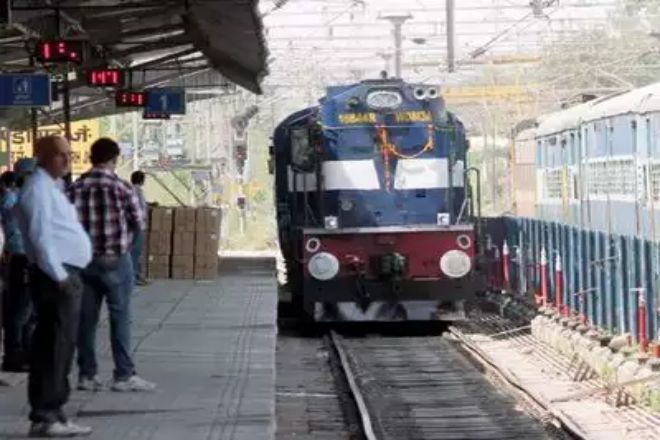
As an important transportation hub in the city, the railway station carries tens of thousands of passengers every day, and the accurate transmission and efficient communication of its information are particularly important.
With its unique advantages, Écrans d'affichage LED play a dual role in information transmission and advertising inside and outside the railway station. It not only provides passengers with timely and accurate travel information but also adds fun and convenience to their waiting time through colorful content display.
1. Advantages of using LED display screens in railway stations
The advantages of using LED display screens in railway stations are mainly reflected in the following aspects:
- High exposure and wide coverage
As an important transportation hub in the city, the railway station attracts a large number of people every day, which enables LED display screens to obtain extremely high exposure.
Whether it is the display screen in the waiting hall, the waiting square, or the display screen on the load-bearing column, it can ensure that advertisements and information can be widely covered by all kinds of passengers, thereby effectively improving brand awareness and information transmission efficiency.
- Targeted delivery and precise reach
The passenger groups at the railway station have diverse characteristics, including different ages, genders, occupations, etc.
Through LED display screens, advertisers can carry out targeted delivery according to different time periods, passenger characteristics, and other factors to ensure that the advertising content accurately reaches the target audience.
This precise delivery strategy not only improves the effectiveness of advertising but also reduces advertising waste.
- Real-time information release and efficient service
Another major advantage of LED display screens at railway stations is that they can release various information in real-time, such as train numbers, train schedules, departure times, ticket gate locations, etc. This real-time information release system can greatly reduce the waiting time and inconvenience of passengers and improve travel efficiency.
At the same time, in an emergency, the LED display screen can also quickly issue emergency notices and safety tips to ensure the safety of passengers.
- Creative display and visual impact
With the advancement of technology, the display effect of LED display screens is getting better and better. Using LED display screens at railway stations can attract the attention of passengers through high-definition picture quality, dynamic effects, creative content, etc.
Especially in some large railway stations, such as Jinan West Railway Station, using ultra-large area LED curved screens for advertising displays can bring strong visual impact and shock to passengers, thereby enhancing brand image and advertising effect.
- Versatility and flexibility
The application of LED display screens at railway stations is not limited to advertising display and information release but can also be used in combination with other devices or systems to achieve more functions.
For example, when used in combination with surveillance cameras and other equipment, real-time monitoring and supervision of railway stations can be achieved; when used in combination with interactive devices, the participation and interactivity of passengers can be improved.
In addition, LED display screens can also be flexibly adjusted as needed, such as adjusting the playback content, luminosité, angle, etc., to meet the needs of different scenarios.
- Enhance the image and brand value of the city.
As one of the important windows of the city, the image and brand value of the railway station are of great significance to the development of the city.
Using LED display screens for advertising and information release at railway stations can not only enhance the overall image and grade of the railway station but also create a good publicity atmosphere and brand image for the city.
At the same time, for some well-known brands, placing LED advertisements at railway stations is also an effective way to demonstrate brand strength and enhance brand value.
2. Basic classification of LED display screens at railway stations
LED display screens at railway stations can be divided into multiple categories according to their installation locations and functional uses. These classifications not only reflect the wide application of LED display screens in railway stations but also demonstrate their diversity and flexibility.
1). Classification by installation location
1.1). LED display screen in the waiting hall
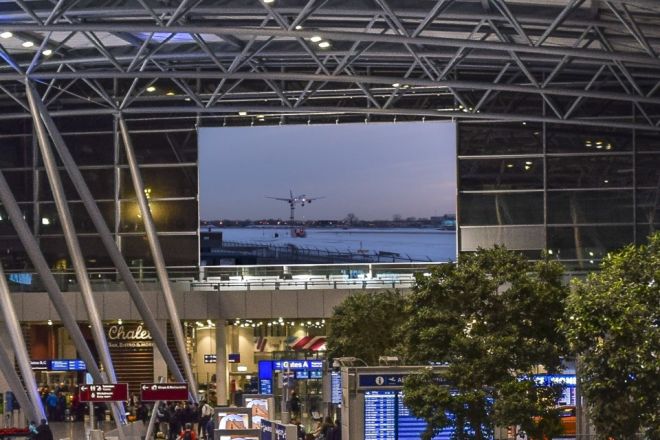
The waiting hall is the main place for passengers to wait for trains, so the LED display screen installed here undertakes important information display tasks. These displays are usually installed on the wall or floor of the waiting hall, using high-brightness, high-definition LED technology to ensure clear display under various lighting conditions.
They are mainly used to display practical information such as train information, train departure time, ticket gate location, etc., in real-time, helping passengers to understand the train dynamics in a timely manner and improve their travel experience.
1.2). Waiting Square LED Display
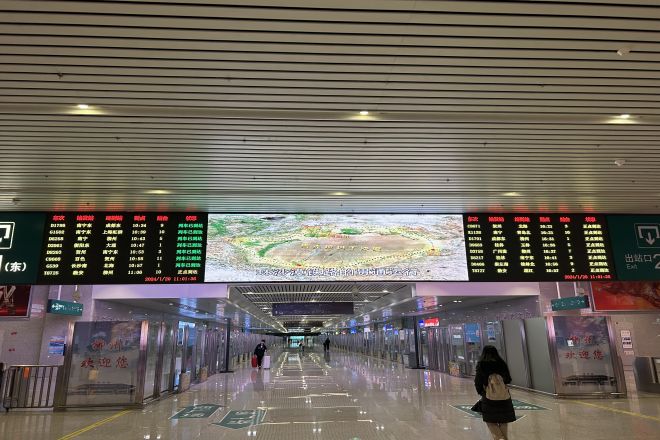
The waiting square is the external space of the railway station and the first impression area for passengers entering the station. The LED display here usually adopts a column design, including various shapes such as triangular pyramids, spheres, and special shapes.
It is not only beautiful but also provides flexible advertising display methods. These displays can play commercial advertisements, tourism promotions, public information, and other content to attract the attention of passengers while bringing additional commercial benefits to the railway station.
1.3). Load-bearing column LED display.
The load-bearing columns of the railway station square are also ideal locations for installing LED displays.
These displays use the vertical space of the load-bearing columns to display content in various forms, such as videos, pictures, and texts, which not only increases the sense of art and entertainment but also makes full use of space resources.
The design of the load-bearing column display needs to consider factors such as load-bearing capacity and viewing angle range to ensure display effect and safety.
2). Classification by function and use
2.1). Information LED display screen
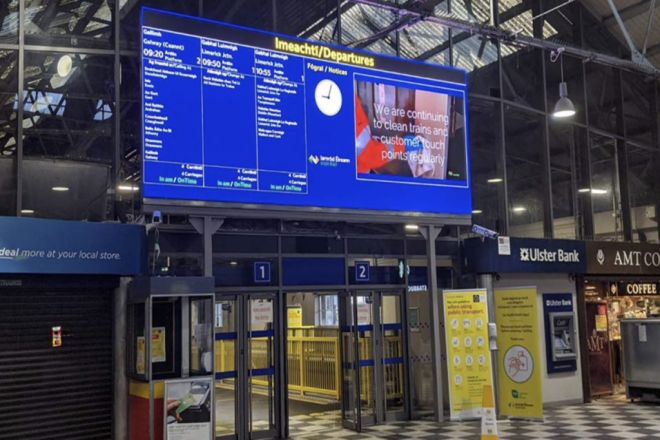
Information display screens are the most basic and important type of LED display screens in railway stations. They are mainly used to display practical information such as train numbers, time, ticket gates, etc., providing passengers with timely and accurate travel guidance.
Information display screens usually use high-contrast, easy-to-read fonts and color combinations to ensure that they can be clearly seen under various environmental conditions. They not only improve the travel efficiency of passengers but also enhance the service level of railway stations.
2.2). Écran publicitaire LED
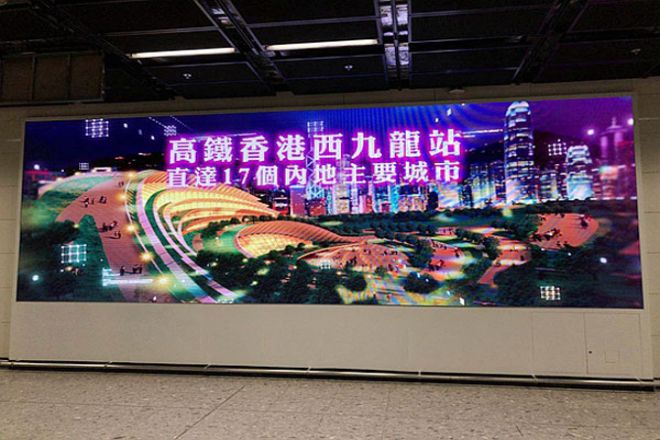
As a place with dense traffic, the LED display screens of railway stations have also become the golden advertising space that advertisers are competing for. Advertising screens are mainly used to play commercial advertisements, brand promotions, and other content.
Through their advantages, such as high communication efficiency, strong preservation, and eye-catching advertising layout, they bring advertisers wide exposure and brand influence. At the same time, advertising screens also bring additional commercial benefits to railway stations and promote the diversified operation of stations.
2.3). Comprehensive LED display screen
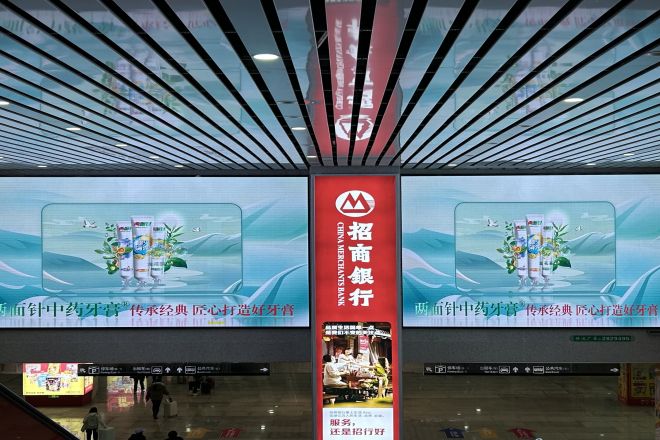
Comprehensive display screens are a combination of information display screens and advertising screens. They have both the function of information display and the ability of advertising. In the actual application of railway stations, comprehensive display screens can be flexibly switched and adjusted as needed to meet different usage needs.
For example, before the train departs, train information and waiting reminders can be played; after the train departs, commercial advertisements or tourism promotions can be played. This flexible and diverse use method has made the integrated display screen widely used and promoted in railway stations.
3. What are the requirements for LED display screens in railway stations?
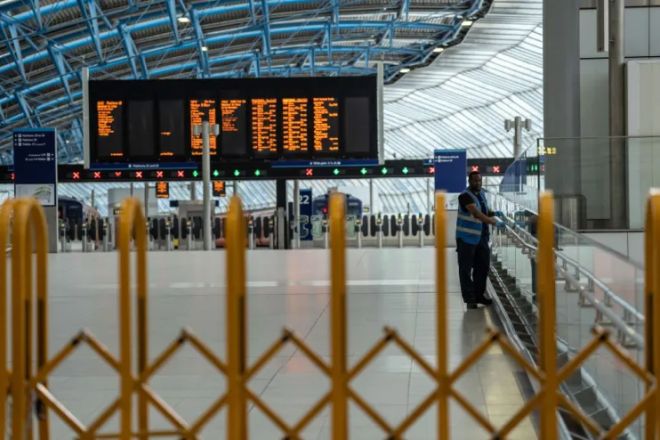
1). Effet d'affichage
Size and résolution: According to the size of the railway station and the expected number of spectators, choose the appropriate display screen size and resolution. Large railway stations require larger and higher-resolution screens to ensure that the information can be clearly seen.
Brightness and contrast: Since the outdoor environment of the railway station is usually bright, the display screen needs to have high brightness and high contrast so that the information can still be easily read in daylight.
Color and clarity: The display screen should be able to present bright and accurate colors and have high clarity to provide a high-quality visual experience.
2). Durability
Niveau de protection: The LED display screen at the railway station needs to have good waterproof, dustproof, and impact resistance to cope with various severe weather conditions and crowded environments. The display screen is usually required to reach a protection level of IP65 or above.
Material and craftsmanship: The material of the display screen should be high-quality and durable, such as an aluminum cabinet. At the same time, the production process also needs to be refined to ensure the stability and reliability of the display.
3). Flexibility
Content update: The LED display screen at the railway station needs to have the ability to update content quickly and conveniently so that the display content can be adjusted in time as needed. This usually requires the display system to support remote management and updates.
Layout and shape: The display screen can be customized according to the actual layout and needs of the railway station, such as rectangular, square, arc, circular, and other shapes and installation methods (such as floor-standing, inlaid, hanging, etc.) to adapt to different scenarios and needs.
4). Safety
Electrical safety: The display screen needs to comply with relevant electrical safety standards to prevent safety hazards such as electrical fires.
Content security: With the widespread use of passenger information systems (PIS systems) in railway stations, the security of content playback has become increasingly important. The display screen system needs to have strict audit and protection mechanisms to prevent risks such as misoperation, lax auditing, or malicious tampering.
5). Environmental protection
Energy consumption: The LED display screen at the railway station needs to have low energy consumption to reduce operating costs and reduce environmental impact. This usually requires the display screen to use high-efficiency LED chips and drive circuits.
Material recycling: After the display reaches its service life, its materials should be able to be easily recycled and reused to reduce pollution to the environment.
Conclusion
In summary, LED display screens at railway stations play a vital role in the modern urban transportation system with their unique diversity and wide application value.
From the precise and efficient display of information to the unlimited creativity of advertising, from the unremitting pursuit of technological innovation to the precise grasp of market demand, the LED display screen industry at railway stations is booming at an unprecedented speed.
Enfin, si vous souhaitez en savoir plus sur les écrans d'affichage LED, veuillez nous contacter.
